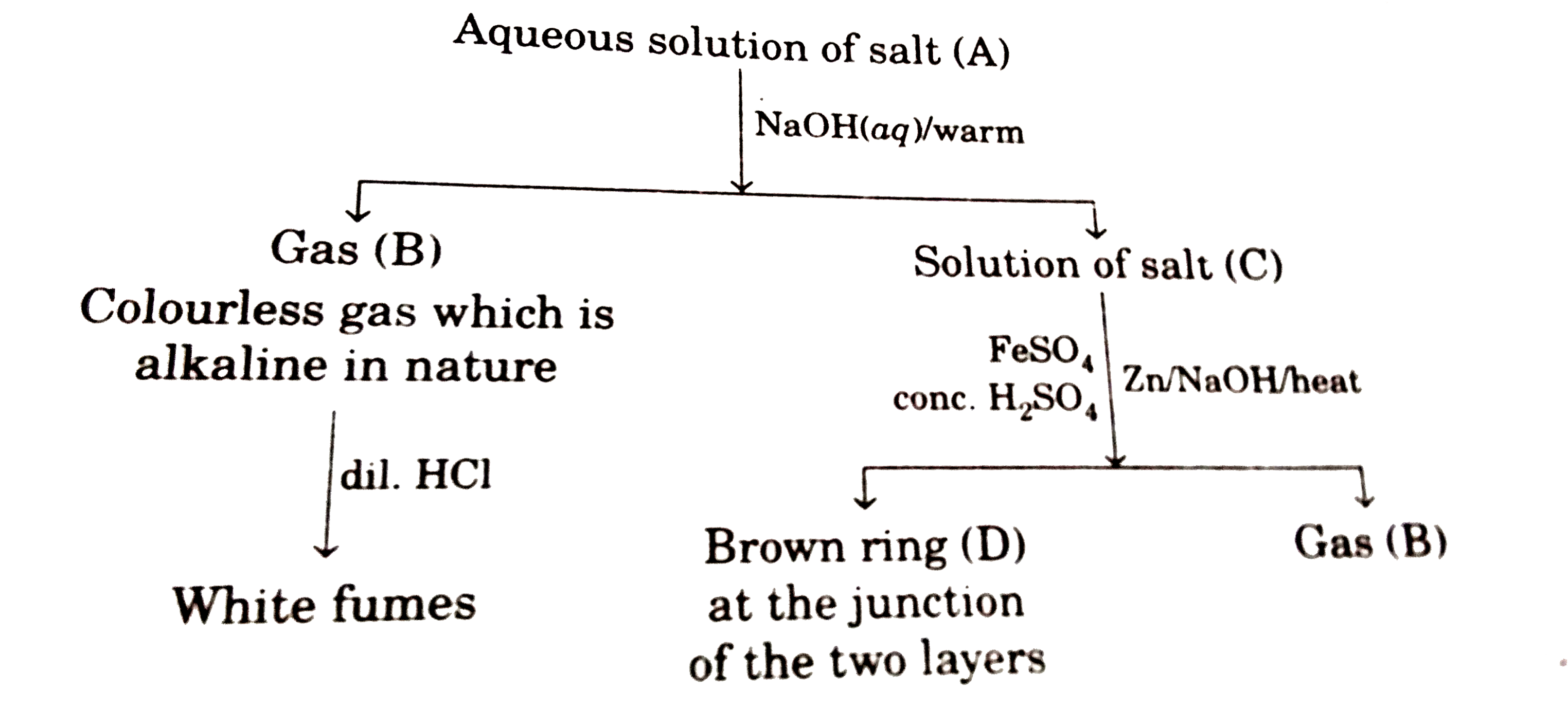A chloride salt on addition of alkali solution gives gas B whicch gives brownn ppt. with nessler's regent. What is A, B and C?
NH4Cl,NH3andHgO⋅Hg(NH2)(NO3)
NH4Cl,NH3andHg(NH3)Cl
NH4Cl,NH3andHgO⋅Hg(NH2)Cl
NH4Cl,NH3andHgO⋅Hg(NH2)I
The correct Answer is:D
Step by step video, text & image solution for A chloride salt on addition of alkali solution gives gas B whicch gives brownn ppt. with nessler's regent. What is A, B and C? by Chemistry experts to help you in doubts & scoring excellent marks in Class 12 exams.
Updated on:21/07/2023Topper's Solved these Questions
- QUALITATIVE INORGANIC ANALYSISBOOK - VK JAISWALCHAPTER - QUALITATIVE INORGANIC ANALYSISEXERCISE - LEVEL 2
75 Videos
- QUALITATIVE INORGANIC ANALYSISBOOK - VK JAISWALCHAPTER - QUALITATIVE INORGANIC ANALYSISEXERCISE - LEVEL 3
72 Videos
- PERIODIC PROPERTIESBOOK - VK JAISWALCHAPTER - PERIODIC PROPERTIESEXERCISE - ASSERTION-REASON TYPE QUESTIONS
35 Videos
- s-BLOCK ELEMENTSBOOK - VK JAISWALCHAPTER - s-BLOCK ELEMENTSEXERCISE - SUBJECTIVE PROBLEMS
2 Videos
Similar Questions
Find the number of correct statements about NH3.
(a) Basic gas
(b) Turns red litmus to blue litmus
(c) Gives white dense fumes with HCI
(d) Gives brown ppt. with Nessler's reagent
(e) Gives deep blue colour with CuSO4 solution with passed in excess
(f) Gives deep blue colour with NiCI2 solution when passed in excess
View SolutionA white amorphous powder a on heating yields a colourless, non-combustible gas B a solid C. The later compound assumes a yellow colour on heating and changes to white on cooling. C dissolves in dilute hydrochloric acid and the resulting solution gives a white precipitate with K4Fe(CN)6 solution. A dissolves in dil. HCl with the evolution of gas, which is identical in all respect with B.
The gas B turns lime water milky, but the milkiness disappears with the continuous passage of gas. The solution of A as obtained above, gives a white ppt E ob addition of NaOH solution, which dissolves on further addtion of base. Identify the compound A, B, C, D and E.
View Solution
Knowledge Check

Salt (A) on heating gives a colourless neutral gas which supports combustion. From the aforesaid, flow diagram, answer the following questions.
The basic radical of salt (A) and gas (B) both gives brown precipitate with Nessler's reagent. the composition of the brown precipitate is:A(NH4)2[HgI4]BHg(NH2)NO3CHgO.Hg(NH2)ID(NH4)3[Co(NO2)6]
Salt(A) on heating gives a colourless neutral gas which supports combustion.
From the aforesaid, flow diagram, answer the following questions.
The basic radical of salt (A) and gas B both gives brown precipitate with Nessler's reagent.The composition of the brown precipitate is:A(NH4)2[HgI4]BHg(NH2)NO3CHgO.HG(NH2)ID(NH4)3[Co(NO2)6]Compound A on hydrolysis gives gaseous compound B and alkaline solution. When B reacts with Nessler's reagent it gives brown ppt. when 'B' reacts with H2[PtCI6] it gives yellow ppt of C. Hybridised state of central atom of the ionisation sphere of compound C is:
Asp3Bdsp2Csp3d2Dd2sp3
Give the concentration of salt solution which is isotonic for R.B.Cs.
View SolutionThe addition of dilute NaOH to Cr3+ salt solution will give :
View SolutionA solution of a salt in water on addition of dilute HCL gives a white ppt. solution in hot water. The salt contains:
View SolutionAn aqueous solution of an anhydrous white solid A on addition of KCN solution gives a white precipitate B. Addition of excess of KCN to the precipitate dissolves if forming C.
View SolutionA solution of a colourless salt in conc. HCl on dilution with water gives white ppt. it is due to
View Solution
